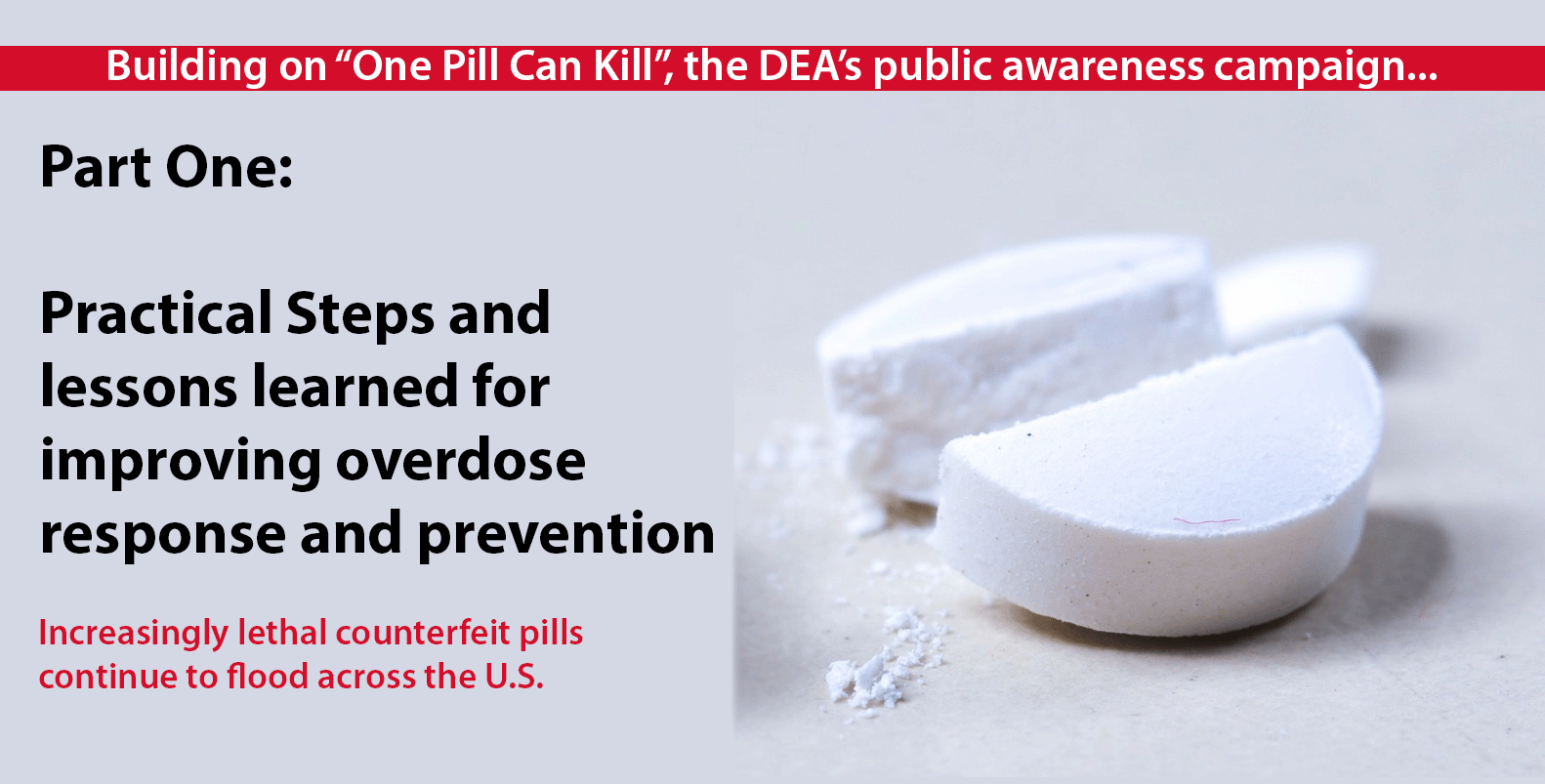
Overdose Response and Prevention: New Three-Part Series
Paramedics from across the country share practical steps and lesson learned for improving overdose response and prevention within MIH programs.
Building on “One Pill Can Kill”, the DEA’s public awareness campaign about the growing overdose problem in America, this is the first of three articles highlighting how community paramedic programs are combatting the problem, not just by treating overdoses in the moment, but by lifting patients up to avoid overdosing again.
South County Fire serves one third of southern Snohomish County; approximately 300,000 people. Approximately 85% of their calls are for emergency medical aid. The Community Resource Paramedic Division, headed by Community Paramedic Captain Nicole Picknell, seeks out patients who had called in an emergency, proactively assisting them to address the underlying chronic problems and avoid a second call. Via phone calls and in-person visits, they provide a variety of services, including identifying and reducing home safety hazards by installing equipment like grab bars and smoke alarms, arranging transport to appointments and accompanying the patient along the way, and connecting patients struggling with addiction to detox programs.
“They said that even just a follow up phone call used to decrease [patients] going back into the hospital by 50%. So what we say we provide is more than a phone call. We actually provide a team that goes to the person where they’re at,” says Captain Picknell. “Because that’s where we’re making a difference … by going to their home, seeing what they need right then, and then making that call.”
The need for such care could scarcely be higher: the rise of counterfeit prescription drugs tainted with addictive, dangerous substances like fentanyl, carfentanil and xylazine puts at-risk populations in great danger of accidentally taking a lethal dose. Picknell reports that the volume of referrals that her division gets is increasing: “We’re walking in and we’re getting 40 in one day, we’re getting 20 in one day … and most of that is mental health, and some sort of substance abuse.” What’s more, the tools that EMS workers have are proving less effective against some newer drugs: “They’re saying it’s taking multiple doses,” Picknell recounts. “It used to be one dose of Narcan and people were awake … but now it’s taking multiple doses to just get them to start breathing again.”
Worsening the problem, local ERs struggle under long backlogs, which makes them unfortunate bottlenecks for detox centers that require medical clearance. “Waiting times can range from 6 hours to 3 days”, says Picknell, “and by then the patient often doesn’t feel well enough, or trusting enough, to continue on with the program”. Efforts are ongoing to form partnerships to provide other channels to this medical clearance, but since South County’s lone crisis center closed at the end of April, finding an open detox bed has itself become an issue. “We’re a little short on where to take them” says Picknell. “There’s a place up in Skagit County … and we know that if we call and say we’re with fire, they’ll save us a bed. But then I’m transporting a person an hour and a half away.”
“We’ll do it, though,” Picknell says, “if that gets them to the right place.”
To combat these problems, South County is avidly pursuing ways to get patients the help they need faster and more reliably. One strategy is to increase manpower: about a year ago, South County’s CRP Division got the resources to work 24 hours a day. Captain Picknell reports that before the switch, the division served about 500 patients a year; since then, they are on track to serve 1,600. Another strategy is to have CRP members embedded in prisons and emergency rooms, to be available as soon as a need is recognized. “My goal would be if I’m able to get these partnerships,” Picknell says, “that there’s a faster route for my team to take someone from the field straight into this care, and get them right into detox. When they say they’re ready, I need it to happen right then.”
South County also leverages their network of contacts: within HealthCall, they’ve built a care network of over 200 contacts who can be brought in for specific cases, whether it’s to have a video consult during an in-home visit, to coordinate tasks like transport or meal services, or to compare case notes with different parties that have worked with the patient before.
In difficult cases, coordination between such contacts has been essential. Some partner programs have strict requirements that involve input from not just the CRP crews, but the ER, the police, and the courts. “It took visits, it took us informing [the program] whenever we went; PD to inform them whenever they went,” Picknell says of one such case. “And now that individual is with mental health services, has gone into detox programs, is attending AA meetings, and is now thriving and not hitting 9-1-1.” For other patients, comparing notes between CRP crews, police and mental health providers has been invaluable in learning how to handle future crises. “Now when police show up, we have a list of the ways we’re to react to this person with our personalities, that way we don’t heighten our language,” Picknell says, “And what we have found is the best way to respond to this person.”
“They can go [to HealthCall] and we can give notes and pass notes … and by us starting to share and allowing them into these cases by adding them to care coordination, they’re starting to see that we can actually talk to each other, it actually works.”
